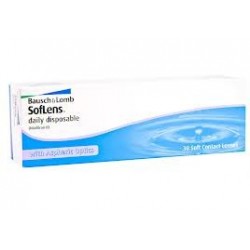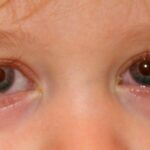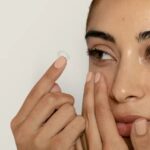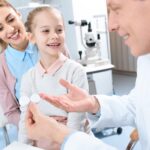How Long Can You Wear Contact Lenses?

Most contact lenses you see in stores come with bold claims that they can be used the whole day without harming your eyes. However, the exact number of hours isn’t always mentioned. Based on all the products we’ve trusted so far here at Contact Lenses 4 Us as well as careful research, we’re revealing the typical maximum duration of wearing contact lenses.
How long can you wear contact lenses?
With the exception of extended-wear contact lenses (the type you can wear even when you sleep), some of the best contacts are promoting up to 16 hours of nonstop use. Those products are often designed for office workers and other employees following a fixed work schedule. As we discovered more and more claims from manufacturers and frequent users on blogs and online forums, it turns out that a lot of people also believe that the 16-hour standard is safe enough.
Unfortunately, some medical experts strongly disagree, especially the ones who have encountered patients who suffered from wearing contacts too long. Brace yourself as we reveal what happened to a man who almost became blind due to his habit of using lenses up to 14 hours every single day, according to a report from MailOnline.
The reason why Andy James almost lost his sense of sight was a corneal ulcer. The condition triggered so much pain that it resulted in an unbearable headache. And, the surprising part, James was sure he followed the instructions and guidelines on the packet. Nowhere did it specify that the duration of use should be significantly less than 14 hours. James even wore glasses from time to time to take a break from contact lenses.
The specialist who took care of James was shocked after learning the situation. She told him that contact lenses should only be worn not longer than nine hours. Not only that–wearing contacts for three straight days should be prevented as well.
However, since the danger of wearing contacts for more than nine hours doesn’t happen ninety-nine percent of the time, all that’s left for you to do if you really need to wear them throughout the day is to choose a good product.
Buy contact lenses that have sufficient water content to maintain moisture and prevent dryness. More importantly, your contacts should have an extremely high rate of oxygen permeability. Your eyes need to “breathe,” too. Those features reduce the chances of corneal ulcers.
What happens when you wear contact lenses too long?
Let’s learn more about corneal ulcer plus another possible consequence of wearing contacts too long.
Corneal Ulcer
Also called keratitis, a corneal ulcer is basically a sore on the cornea, the transparent layer of the eye covering the pupil and the iris. It may lead to red eyes, excruciating pain, discomfort while blinking, excessive tears, pus, vision problems, photophobia, swollen eyelids, and white spots.
People who wear contact lenses aren’t the only ones at risk of corneal ulcer. Those with chickenpox may also experience the condition. Even dry eye syndrome and an injured cornea are considered as possible causes.
In addition, even though you’re not a frequent user of contact lenses, improper cleaning and maintenance of the lenses and their cases can still result in a corneal ulcer.
The first thing you need to do once you notice symptoms is to consult an ophthalmologist. You can’t just go to the drugstore and purchase any kind of eye drops. You need specific instructions from a specialist so you’ll know whether to buy an antiviral, antifungal, or antibiotic product. Antifungal tablets and injections are also possible solutions. This goes to show that only your ophthalmologist knows the best treatment for your condition.
Don’t worry about too much pain; your eye doctor can prescribe medication suitable for your case. Also, since scarring may happen after the treatment, a surgical procedure can be done to improve your vision.
Conjunctivitis
The lesser evil when compared to corneal ulcer, conjunctivitis is almost similar to the first condition except for the possibility of a vision problem. Most of the time, people with “pink eye” still have perfect vision. Although, the thick discharge can affect your sight a little bit.
Conjunctivitis has a wide range of causes. It may be caused by factors like allergies, bacteria, viruses, chemicals, and pollutants. However, careless use of contact lenses is one of the most common reasons for pink eye.
If your contact lenses are indeed the cause of your conjunctivitis, expect your doctor to recommend another product that will match your eyes’ needs or even another brand of cleaning solution just to be sure.
Find lenses you need:
Daily disposable contact lenses
Hypoxia
The condition wherein there’s an insufficient amount of oxygen penetrating your eyes is called hypoxia. We’re not literally talking about airflow; oxygen permeability relies on diffusion from your tears on your cornea’s surface.
Hypoxia can be a huge inconvenience even when it’s just on its earlier stages. It can cause blurred vision. Fortunately, that’s just temporary. Just make sure to change your habit of wearing contact lenses too long and too often. You must also wear high-quality contacts.
If you let the condition get worse, your epithelium will become thinner. Bacteria are more likely to contaminate your eyes. The microorganisms might even stay longer on your eye’s surface due to the lack of a protective barrier. This easily starts an infection.
Conclusion
It’s not a guarantee, but you can wear contact lenses for 16 hours max without compromising safety. If you don’t want to risk it, wear your contacts for only nine hours or less. You may also take a break from wearing lenses, preferably based on a two-day interval to avoid using contacts for three days straight. Be more mindful of the duration to keep your eyes safe from ulcers and hypoxia.
Where to Buy Daily Contact Lenses
To give people a chance to wear contact lenses all day, Contact Lenses 4 Us highly recommends daily contacts with generous moisture content. Products like Dailies Total 1, Acuvue® Oasys 1-Day with HydraLuxe™, and Proclear 1 Day are less likely to contribute to corneal ulcers and hypoxia because of their high oxygen permeability.
Place an order right now even if you don’t have a prescription. We offer global shipping!
Read also:
What Should Everyone Know About Keratitis?

Purevision 2HD contact lenses
PureVision 2HD from Bausch + Lomb offers a distinct blend of convenience, comfort, and superior vision quality. These spheric...

Soflens Daily Disposable Contact lenses (30)
The Softlens Daily Disposable Contact Lenses from Bausch & Lomb is disposable and designed for night time use. It deliv...






